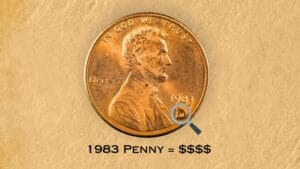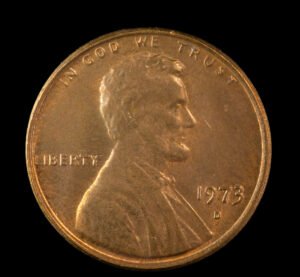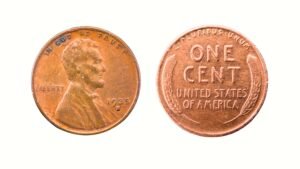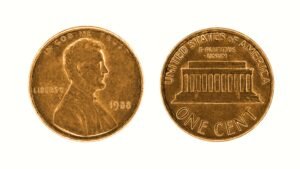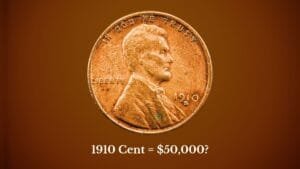Do you have an old 1976 Lincoln Penny in your old coins collection? If yes, then you are about to get rich because this small cent can sell for up to $8,000 today! Want to know if your 1976 penny is worth this much? Learn about all the rare features, including high grades, mint marks, and errors that could make your penny valuable!
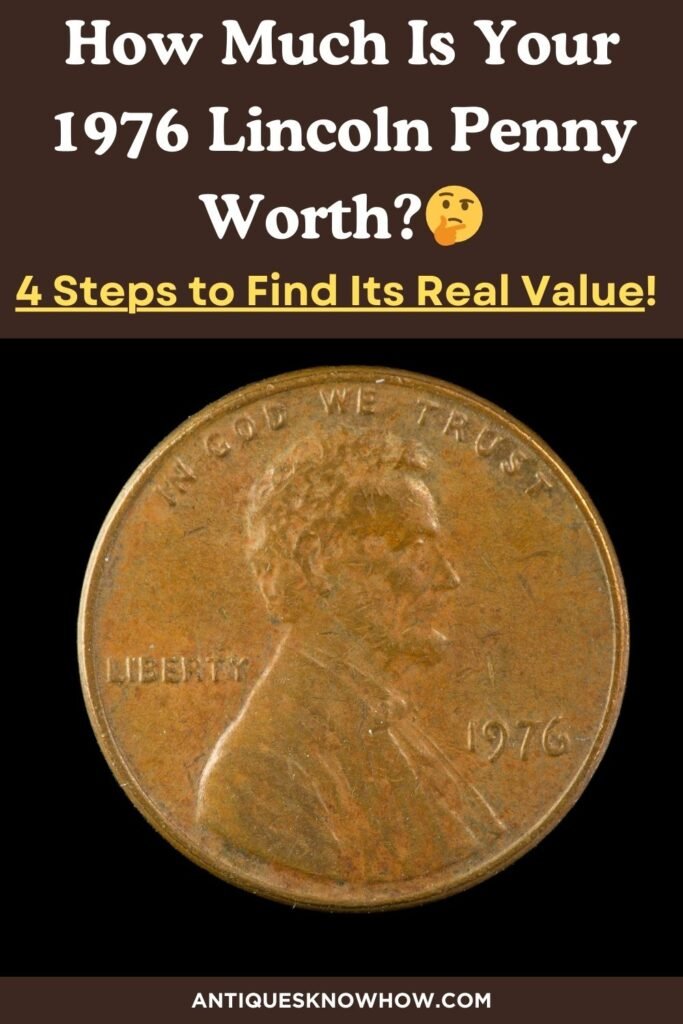
Brief History of 1976 Lincoln Memorial Penny
The Lincoln penny was first introduced in 1909 to commemorate the centennial of President Abraham Lincoln’s birth. The 1976 Penny was produced during a time when the coin’s reverse transitioned to the Lincoln Memorial from wheat stalks.
The total mintage for the 1976 Lincoln penny was huge, with the total number of coins exceeding 8.9 billion. This high production volume means that a 1976 penny is easily available. Nonetheless, certain varieties and errors are still rare to find and, hence, are extremely valuable!
| 1976 Lincoln Memorial Cent | Key Features & Facts |
| Coin Composition | 95% Copper, 5% Tin and Zinc |
| Minting Location | Philadelphia, Denver, San Francisco |
| Minting Year | 1976 |
| Face Value | 1-cent (0.01$) |
| Weight | 3.11 grams |
| Diameter | 19.05 mm |
| Thickness | 1.52 mm |
| Designer | Victor David Brenner, Frank Gasparro |
| Mint Marks | D – Denver Mint, S – San Francisco Mint, No Mint Mark – Philadelphia Mint |
| Total Mintage | Around 8,900,017,185 coins |
How to Identify a 1976 Lincoln Penny (Design & Composition)
Identifying a 1976 Lincoln penny’s design and composition will help you evaluate its worth accurately. Here is a complete overview of its features:
1976 Lincoln Penny Obverse:
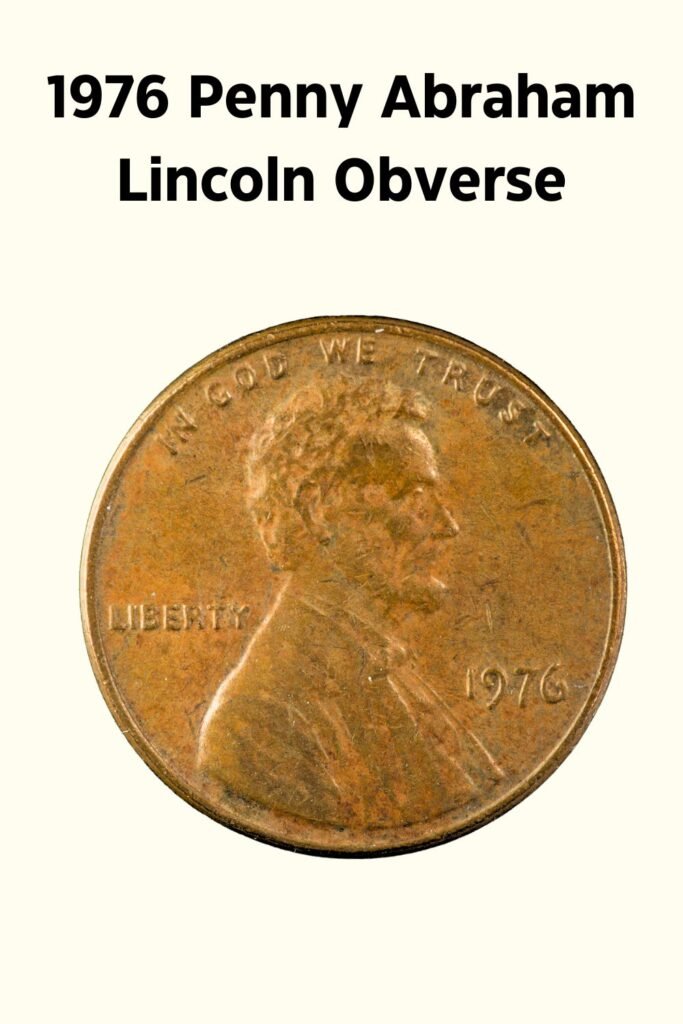
- A right-facing portrait of Abraham Lincoln
- “In God We Trust” inscription along the upper edge
- “Liberty” inscribed to Lincoln’s left
- The mint year “1976” located to the right of Lincoln’s bust
- The D or S mint mark, if present, below the mint date
1976 Lincoln Penny Reverse:
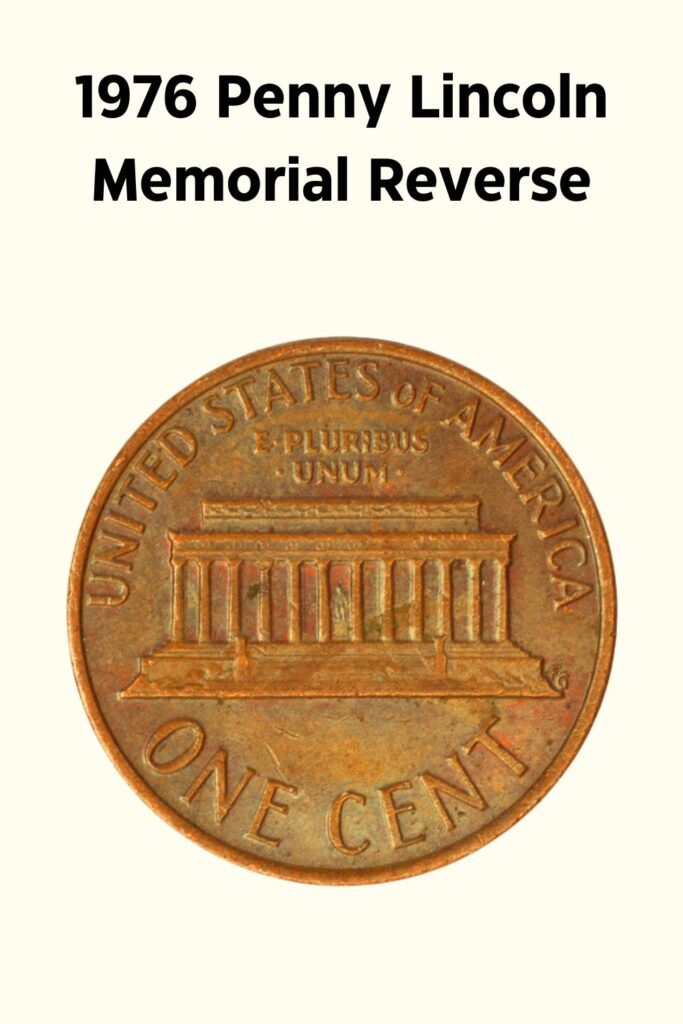
- Image of the Lincoln Memorial at the center
- “United States of America” inscription at the top edge
- “E Pluribus Unum” inscribed above the memorial
- The denomination “One Cent” displayed at the bottom in large font
- The designer’s initials, “FG” on the right side of the staircase
Coin Composition & Dimensions
The 1976 Lincoln penny is composed of the typical bronze alloy with 95% copper and 5% zinc, weighing approximately 3.11 grams (0.110 ounces). This composition gives the coin its popular copper-red luster.
Besides, the cent coin has a diameter of 19.05 millimeters (0.75 inches) and a thickness of 1.52 millimeters (0.059 inches) with a uniform smooth edge.
How Much Is 1976 Lincoln Penny Worth? (4 Key Factors)
On average, a 1976 Lincoln penny in average condition may only be worth 1 to 3 cents. However, specific variants with high grades or rare errors can be worth hundreds or even thousands of dollars. Let’s understand how!
1. Coin Grading and Condition
The value of a 1976 Lincoln Memorial penny can significantly vary based on its conditions, which is professionally assessed in grades ranging from PO-1 to MS-70. Higher grades reflect better conditions and, hence, higher values!
For example, a 1976 no mint mark penny in MS68 grade sold for an auction record price of over $7,930 on Heritage Auctions, while the same cent in MS65 grade is worth around $15 only!
2. Coin Toning & Color
Toning, which usually results from oxidation and turns the penny brown, can greatly affect a 1976 penny’s value. There are three primary classifications based on toning:
- Red (RD): 1976 pennies with a bright red color are graded RD and are the most desirable. Uncirculated RD pennies can be worth $20 or more in mint state.
- Red-Brown (RB): These cents feature both red and brown toning, making them less valuable. Still, RB 1976 pennies can fetch around $5 to $10 in mint state.
- Brown (BN): The 1976 cents that have turned completely brown due to oxidation are graded BN and are generally the least valuable.
3. Mint Marks & Mintage
The 1976 Lincoln Memorial Cent was minted at three locations, each with its specific mintage, which impacts the coin’s value as follows:
1976 Penny No Mint Mark (Mintage – 4,674,292,426)
The 1976 pennies with no mint mark were struck at both Philadelphia and West Point mints, with the former producing over 3.1 billion coins and the latter producing over 1.5 billion coins.
The value of a 1976 no mint mark penny is around $0.01 in average condition, but uncirculated cents can fetch up to $20 or more, with those in higher grades, like MS67+ or above, reaching $2,000 or more!
1976 D Lincoln Penny (Mintage – 4,221,592,455)

The Denver Mint alone produced over 4.2 billion Lincoln Pennies in 1976, identified by the small “D” mint mark. Similar to the Philadelphia version, these coins are generally worth about $0.01 in circulated condition but can fetch up to $10 in uncirculated condition and up to $1,000 in highest grades!
| Coin Grades | Condition Details | 1976 No Mint Mark Penny Value | 1976 D Penny Value |
| Poor (0) to Extremely Fine (XF45) | Significant wear, faded but visible details | 2-3 cents | 2-3 cents |
| Almost Uncirculated (AU50) to Mint State (AU58+) | Slight wear on highest points, visible marks or blemishes | 10-30 cents | 10-50 cents |
| Mint State (MS60 – MS64) | Uncirculated with minimal wear | $1 – $5 | $1 – $10 |
| Mint State (MS65 – MS66+) | Nearly flawless with very minor imperfections | $11 – $35 | $15 – $50+ |
| Mint State (MS67 – MS67+) | Well-preserved with no major flaws | $50 – $350 | $400 – $1,000+ |
| Mint State (MS68 or Above) | Nearly perfect, luster, no major marks or flaws | $1,000 – $5,000 or more | N/A |
1976 S Lincoln Penny Proof (Mintage – 4,149,730)
The proof version of the 1976 Lincoln cent was only minted at the San Francisco Mint and hence bears the small “S” mint mark on the coin’s obverse. You can distinguish these special coins from regular strikes by their high-quality mirror-like finish.
- Regular PR Proofs: These 1976 proof pennies feature the standard proof finish and sharp details. Commonly found in proof sets, these coins are typically valued between $2 and $5.
- Cameo (CAM) Proofs: Cameo 1976 penny proofs have a strong contrast between the frosted design and the reflective background. A 1976 CAM Penny proof can be worth around $5 to $15.
- Deep Cameo (DCAM) Proofs: DCAM proof coins feature even greater contrast and depth in the design, making them rarest. 1976 Deep Cameo proof pennies can command higher prices, ranging from $10 to $50 or more, with PR69 examples fetching up to $500!
4. Valuable 1976 Lincoln Penny Errors List
A 1976 Lincoln Cent can be worth double or triple its average value if it features a rare minting error. So, look out for the following errors on your small cent:
Double Die Obverse
The double die errors happen due to a flawed die with a doubled design, which is then transferred to the 1976 penny. Look for doubling on the date “1976”, lettering, or Lincoln’s features to spot this rare coin. The 1976 isn’t known for major double dies, but minor ones exist with values ranging from $5 to $50 for most examples.
1976 D Penny Struck on a Copper-Nickel Planchet
This rare coin was produced when a 1976 Lincoln penny was struck on a planchet intended for a 5-cent nickel coin. To identify it, check the weight, which would be around 5 grams instead of 3.11 grams, and the color (silvery instead of copper).
The value of this 1976 penny error ranges from $50 to $200 in average condition, with higher-grade examples fetching $1,500 or more. For example, a well-graded 1976-D Cent–Struck on a Copper-Nickel Planchet sold for $1,265 on Heritage Auctions!
Off-center Strike Error
This error happens when a 1976 penny coin blank is not properly aligned during striking, causing part of its design to be missing and creating a blank crescent on the coin. The value of this error coin depends on the degree of misalignment, the coin’s condition, and whether the date is visible or not!
The more off-center and visible the date, the higher the value. For example, 20-50% of off-center 1976 pennies can fetch $50-$200. An MS65BN off-center 1976 penny sold for over $228 in a coin auction!
Die Break Error
This error occurs when a piece of die breaks during minting, creating irregular lines or bumps on its surface. To spot this rare coin, look for raised lines or bumps on the 1976 penny’s obverse (front) or reverse (back).
Minor die breaks are common and worth $1-$5, while major ones can be worth $20-$100. For example, an MS65RB 1976 penny with a major die cud on the top sold for $109 on Heritage Auctions!
BIE Error
This is a die break error causing a small vertical die crack that appears between the B and E of LIBERTY, resembling an I on the 1976 Lincoln penny obverse. Most BIE errors on 1976 pennies are worth $5-$20.
While these errors are the most sought-after, do not miss common errors such as re-punched mint marks and double-struck errors, as they can also increase a 1976 cent value. Once you figure out the penny’s real value, you can easily sell or purchase it at the best price!
Note: This article is intended for informational, educational, and entertainment purposes only. Some images are illustrative and may not represent actual brands, products, or related entities. All trademarks, product names, brand logos, packaging, and other intellectual property referenced remain the exclusive property of their respective owners. Any brand mentions or references are provided solely for descriptive and educational context and do not imply any formal or commercial association.



